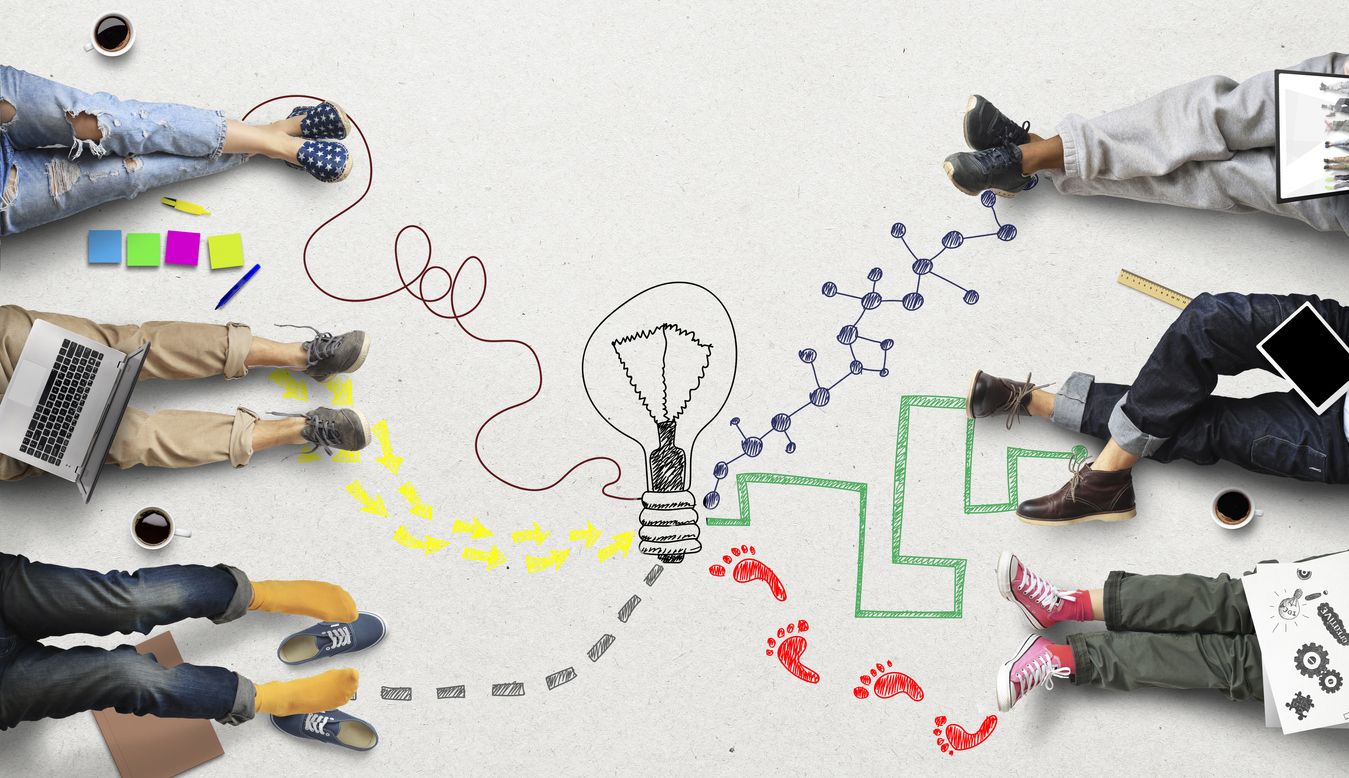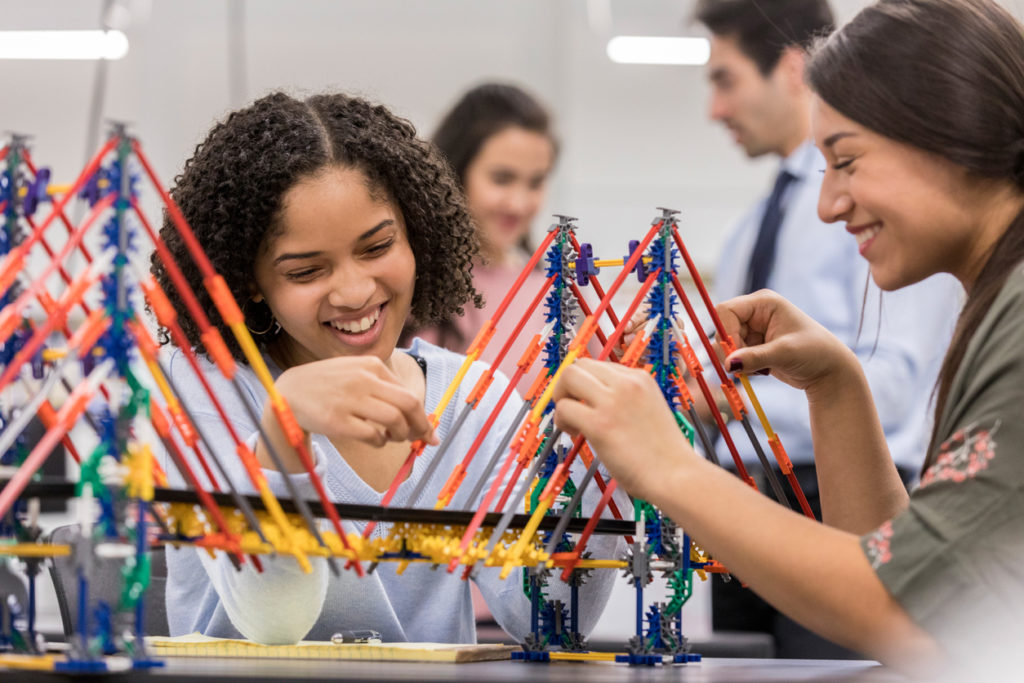In June of 2021, we published the report Student-Centered Learning in Michigan K-12 Schools: Factors That Impact Successful Implementation. This study aimed to capture the ways in which Michigan schools are implementing student-centered learning practices along with the factors that impact the successful implementation of such practices.
To inform the report, we interviewed teachers and both building- and district-level administrators from five Michigan school districts: Berrien Springs Public Schools, Hamilton Community Schools, Oxford Community Schools, Portland Public Schools, and the Public Schools of Calumet, Laurium, & Keweenaw. These school districts belong to a larger network of districts that are early adopters of student-centered learning called the Michigan CoOp (MiCoOp), which is led by Lisa Sitkins.
This mini-series Student-Centered Learning in Michigan K-12 Schools—which is part of our larger student-centered learning blog series—is meant to accompany the report and further explore the practical implications of the research. In addition, the mini-series celebrates these schools as well as other K-12 schools throughout the state of Michigan who continue to work toward implementing student-centered learning models that include elements of digital learning, personalization, and competency-based learning progressions.
In our conversations with teachers and school leaders about what student-centered learning looks like within their school and/or district, we inevitably discussed competency-based education.
This post will explore competency-based education, its relationship to student-centered learning, as well as the student-centered work Michigan schools are doing in terms of moving towards becoming competency-based.
Competency-based education: Key components and big ideas
Some schools are making learning student-centered by developing learning competencies. In a competency-based classroom, progress is measured based on demonstrating mastery of standards or competencies, and students don’t move on to the next topic until they’ve demonstrated mastery of the previous one.
The Aurora Institute (formerly iNACOL) defines competency-based education by seven core elements:
- Students are empowered to make decisions about their learning
- Assessment is meaningful and yields timely, relevant, and actionable evidence
- Students receive support based on their learning needs
- Students progress based on mastery, not seat time
- Students advance along different pathways and at their own pace
- Strategies to ensure equity for all students are embedded into the educational system
- Rigorous, common expectations for learning are established
The Aurora Institute emphasizes that in a truly competency-based environment, all seven elements should be implemented and that strong implementation requires “policies, pedagogy, structures, and culture that support every student in developing essential knowledge, skills, and dispositions.”
Rather than moving through lessons and units together as a class and measuring progress based on seat time or time spent on a topic, in a competency-based classroom, learning experiences are designed so that students progress on their own pathway and at their own pace.
It is about designing learning in a way that allows students to move forward when they are ready while providing extra time and support to those who are not.

In a competency-based classroom, progress is measured based on demonstrating mastery of standards or competencies, and students don’t move on to the next topic until they’ve demonstrated mastery of the previous one.
The connection between competency-based education and student-centered learning
Student-centered learning is a philosophy or an approach to education that is focused on meeting the needs of each student individually.
In a student-centered learning environment, students and teachers work together collaboratively to design learning plans or pathways that meet the needs of each learner.
So what exactly is the relationship between student-centered learning and competency-based education?
One of the four core tenets of a student-centered learning environment is establishing competency-based learning progressions—the academic progression of students based on the demonstration of mastery or competence of predetermined standards.
CBE is a component of student-centered learning; it is a specific and deeper change rooted in a system designed to support student mastery and success.
CBE is a means to make learning student-centered.
Competency-based education in Michigan K-12 classrooms
In our discussions with teachers and school leaders, many acknowledge that of the four tenets of student-centered learning—voice, choice, competency-based learning progressions, and the continuous monitoring of student needs—making learning competency-based is the most challenging.
Being truly competency-based likely requires changes in scheduling, staffing, grading, assessments, curriculum, etc.
However, despite the challenges associated with making learning competency-based, many schools are working towards establishing competencies.
Within Oxford Community Schools, a K-12 International Baccalaureate (IB) district, Oxford Virtual Academy (OVA) offers a unique pathway for students that fuses homeschooling with the best parts of traditional education. By working in partnership with families, OVA provides rigorous academic preparation that is teacher mentored, parent-directed, and customized to meet the needs of students from all academic backgrounds.
Jordan Dennis, Oxford Virtual Academy Hybrid Learning Coordinator, admitted that while Oxford is very interested in competency-based education, in terms of implementation, they are not quite there.
“It has to be driven by the teachers and by the community. And in order to do that, they need to understand its benefits and why it’s something that is necessary,” posed Dennis. “Not just that it’s better than the current model, that it’s something that needs to be done in order to address the holes and the gaps in the current model.”
Without an understanding of the gaps in the current, traditional model and the students for whom it isn’t working, it may not seem like there is enough of a reason to make the change and move towards student-centered learning and/or competency-based education.
The Public Schools of Calumet, Laurium, & Keweenaw (CLK) is a small, rural school district in Michigan’s Upper Peninsula. With the help of Lisa Sitkins from MiCoOp, who has provided tools and resources, Chris Davidson started CLK on a path toward CBE about two years ago.
Davidson has established some small teacher teams to begin thinking about and designing competency-based models. He shared that their goal is to have as many CBE components in place for the start of the 2021–22 school year as possible.
“We’re actually looking at maybe starting with a school within a school-type model, which would allow for family choice,” Davidson said. “This would allow those who want to stick to a more traditional model to have that choice. And for those who are interested in moving in this direction with us right out of the gate, they can move right with us.”
While many teachers and school leaders recognize that the traditional model of education isn’t working for all students, truly moving towards a competency-based or student-centered model requires change beyond the classroom…and may commence with smaller steps forward.

“It has to be driven by the teachers and by the community. And in order to do that, they need to understand its benefits and why it’s something that is necessary.”
Standards-based grading and instruction: A step in the right direction
While being standards-based or using standards-based grading, a topic that came up in many of our conversations with school leaders, is not the same as being competency-based, it could be considered a precursor or a “first step” that districts may take.
In standards-based classrooms at Berrien Springs’ Sylvester Elementary and Berrien Springs Middle School, rather than using a traditional A-F letter grading system, teachers use a scale of 0–4. This reporting method and scale help them measure how well an individual student is doing in relation to specific grade-level standards.
Students have the opportunity to re-do assignments and are encouraged to track their own progress related to the standards-based learning targets.
Portland Public Schools teacher Chandra Polasek explained that her personal journey towards becoming more student-centered really began when she started reflecting more intently on the work she was doing as a teacher.
She realized that her instruction wasn’t driven by competencies or any kind of proficiency with the standards: “So I started looking at how I can revise what I’m doing to really give meaning to the standards and to what students take away.”
During the 2019-20 school year, she moved to fully utilizing standards-based grading and having conversations about proficiency. “It was a process of really looking at my rubrics, looking at my instruction, and changing my curriculum,” said Polasek. “It took about six years of completely revising things.”
She admits that while it was a lot of work, it was more of a personal challenge in looking closely at content and curriculum, giving up some of what she personally wanted to do in the process.
While schools are taking steps towards creating competencies and being competency-based, most are not quite there yet. However, a focus on standards, on mastery of those standards, and altering the grading system to reflect that could be considered a step in the direction of competency-based learning.

“It was a process of really looking at my rubrics, looking at my instruction, and changing my curriculum.”
Final thoughts
Creating learning competencies and designing flexible learning opportunities that allow students to demonstrate mastery of these competencies on their own pathway and at their own pace is a piece of designing a learning environment that is student-centered.
However, CBE is about more than just flexible pacing—it is about designing learning to generate student success.
The following resources may be helpful as you consider taking a competency-based approach to make learning student-centered:
- 4 Strategies for Schools Shifting From Grades to Standards-Based Learning: When the teachers and administrators at a middle school determined that A-F grades didn’t align with their goals, they began a years-long shift in how they assess student learning.
- What’s New in K-12 Competency-Based Education (CBE)?: The CompetencyWorks blog provides brief reviews of new resources and research, including:
- a new CBE school-design rubric;
- video examples of CBE educator competencies;
- a crosswalk between CBE principles and 20 EdTech tools, proficiency-based summative assessment resources;
- a new book on shifting to a learner-centered paradigm; and
- upcoming professional learning opportunities.
- Transforming Learning through Competency-Based Education: In this article, Susan Patrick of the Aurora Institute explains how some states are adopting a range of policies to personalize student learning and move away from seat-time rules.
- Competency-Based Education in Harrisburg, South Dakota: Travis Lape, Innovative Programs Director for the Harrisburg School District in South Dakota, was a presenter for the Introduction to Competency-Based Education breakout session at the Aurora Institute Symposium 2020. This blog post shares his remarks and selected slides.
- Finding Your Path: A Navigation Tool for Scaling Personalized, Competency-Based Learning: This resource is designed to help learning communities understand the conditions for sustainable systems change and to develop and advance a strategic plan for district-wide transformation to personalized, CBE.
- Five Big Ideas for Learner-Centered Competency Framework Design: Competency frameworks are a critical feature of learner-centered schools and education systems. They define a set of important capabilities (e.g., reading critically, designing solutions, sustaining wellness) for college and career, civic engagement, and lifelong learning.
- What is Personalized Learning? What is Personalized Competency-Based Learning?: In this blog, KnowledgeWorks provides a definition for personalized, competency-based learning as well as why school districts should choose personalized learning.
- Empowering Students Through the Lens of Adaptive Competencies: CBE in Chicago Public Schools
The next blog in this series will explore how teachers continuously monitor student needs and progress in student-centered classrooms.
Student-centered learning blog series
In our Student-Centered Learning blog series, we lead a discussion about student-centered learning: what it is, how it can help students and schools, and how to make it a reality. Our hope with this series is to provide practical insights to school leaders, teachers, and parents on how to make education more meaningful to students. Stay up to date on future blogs in this series by signing up for email notifications!

